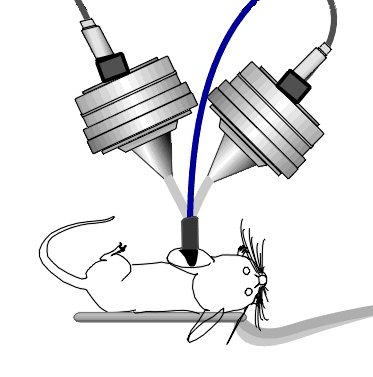Your Test Area
DPOAES may be susceptible to ambient noise and rely heavily on good positioning of microphone and ear tubes. Shaking or other mechanical movement can dislodge these items, causing gaps to open in the signal path and degrading the signal quality. It is good practice to minimize noise in the test area and to ensure all conditions are carefully controlled during testing. Be sure to consider the elements detailed below in setting up your testing area.
Enclosure Considerations
A sound attenuating chamber and Faraday cage are not required for DPOAE testing, but can be used in excessively noisy environments.
Note
Unlike ABR recordings, DPOAE recordings are not influenced by Electromagnetic noise.
Heating Pads
When the subject is sedated for testing, it generates less body heat and core temperature can drop. When the subject loses body heat, its hearing system is not as responsive which can artificially raise hearing thresholds (and reduce measured DP). A heating pad can be used to maintain the subject's temperature.
Below are two alternative types of heating pads used for this purpose:
An Isothermal Pad contains a phase change material that changes state near the subject's body temperature. It can be heated in a microwave and can typically hold a constant temperature for an hour or more.
A Warm Water Recirculator moves warm fluid through a small subject heating pad to keep the subject's body temperatures stable. Because this method uses an external heating element and pump to transfer water to the pad via non-ferrous tubes, the recordings will not be affected.
Examples: https://www.braintreesci.com/temperature-measurement-control/heat-therapy-pumps-pads/adroit-heat-therapy-pump/ and https://www.braintreesci.com/temperature-measurement-control/heat-therapy-pumps-pads/gaymar-heating-cooling-t-pump-back-in-stock/
Speaker Placement

To minimize the effects of distortion or interference, keep ear tubes short to minimize bending and prevent crimping. TDT recommends positioning the subject on it's side and mounting stimulus speakers directly above the subject's ear- allowing for tube lengths of 3 - 5 cm and repositioning or turning speakers as needed rather than bending ear tubes.